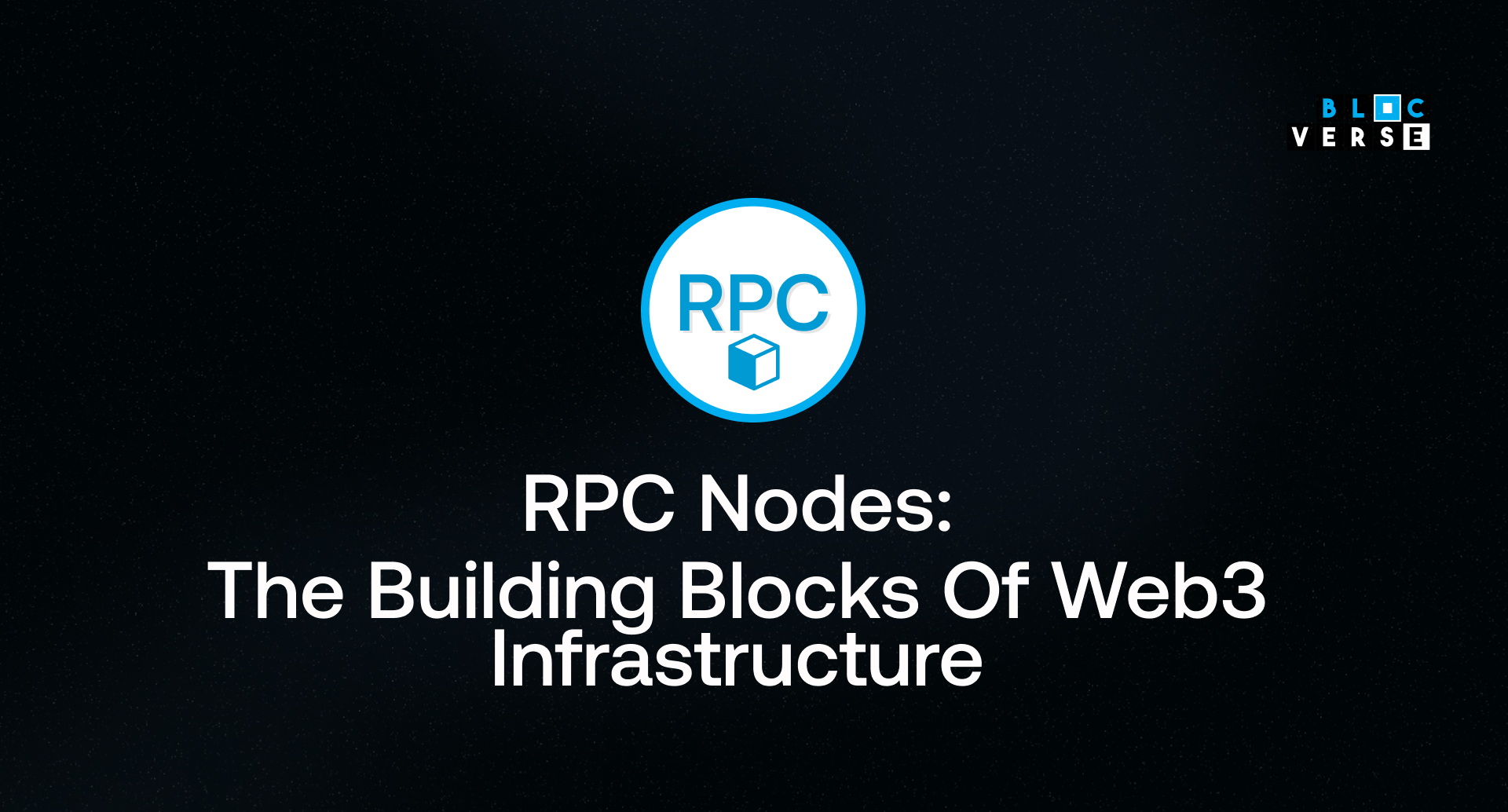In the world of Web3, where decentralization, blockchain technology, and smart contracts are changing how we think about digital interactions, the job of software developers is becoming increasingly important.
This article covers the importance of RPC Nodes to Web3 software developers and how they can be used efficiently.
Understanding RPC (Remote Procedure Call) Nodes is useful and necessary for these innovators and builders.
TABLE OF CONTENTS
WHAT IS AN RPC NODE?
An RPC node, which is simply a computer or server running blockchain client software such as the Ethereum blockchain’s Execution Layer (EL) and Consensus Layer (CL) infrastructure, is critical to the blockchain network.
It allows external programs to connect and execute a variety of operations, such as reading data, submitting transactions, and monitoring network activity.
RPC nodes are critical for operating and developing decentralized apps (dApps) since they link the blockchain and external applications.
THE ROLE OF RPC NODES IN WEB3
Facilitating Communication
Facilitating communication between the decentralized network and user interfaces is one of the main functions of RPC Nodes. This interaction is essential for dApps, because it allows users to carry out smart contracts, transfer tokens, and access blockchain data.
Enhancing Security and Decentralisation
RPC Nodes contribute to the blockchain’s security and decentralization.
They avoid a single point of failure by dispersing the network’s data and processing power among numerous nodes.
This configuration improves security and encourages a more democratic and decentralized structure.
WHAT IS AN RPC ENDPOINT?
The RPC endpoint is a communication route between the RPC node and other applications, such as decentralised apps or dApps. An RPC endpoint receives requests from dApps seeking to communicate with the blockchain, and the RPC node in question receives these requests after forwarding them.
Through the RPC node, external entities can communicate with the blockchain via the RPC endpoint, which offers an accessible interface. It offers a standardised data transmission and reception method while abstracting the difficulties of direct blockchain interaction.
The RPC node handles requests sent by applications to RPC endpoints (such as those used to start transactions or access blockchain data) and gives back the appropriate response via the endpoint.
A single RPC node or a cluster of nodes can have multiple RPC endpoints connected to it in a more complicated configuration, improving load balancing and allowing for handling numerous simultaneous requests.
The cooperation of RPC nodes and endpoints enables communication between external applications and blockchain networks.
Both the endpoint and the node are essential to the proper operation of blockchain-based apps since they serve as the interface over which external requests are submitted and received and the point at which the node interacts with the blockchain directly.
DIFFERENT TYPES OF RPC ENDPOINTS
- Public RPC Endpoints
- Private RPC Endpoints
- Alternative RPC Endpoints
Public RPC Endpoints
A Public RPC endpoint is an access point that allows anyone or any application to interact with a blockchain network, and they have the following key aspects.
- Open Access
- Use in Public Blockchain
- Ease of use for developers
- Reliance on third-party providers
- Potential for network congestion
- Security risk.
Private RPC Endpoints
Unlike Public RPC endpoints, private endpoints are typically restricted to a set of users or applications; access to these endpoints is usually controlled through security measures like API keys and VPN access; they have the following key aspects.
- Private Access
- Increased security and control
- Use in Private or Consortium Blockchain
- Dedicated Resources
- Cost and Maintenance
Alternative RPC Endpoint
Alternative RPC endpoints play a critical role in ensuring the continuous, efficient, and secure operation of blockchain networks and the applications that rely on them.
They provide a necessary backup, help manage traffic loads, and offer specialised services based on geographical or technical requirements.
For any serious blockchain application, setting up and maintaining alternative RPC endpoints is a key part of the infrastructure strategy; they have the following key aspects.
- Reliability
- Load Balancing
- Geographic distribution
- Security
- Custom configuration
WHY ARE RPC NODES ESSENTIAL FOR WEB3?
Scalability and Performance
The scalability of blockchain networks becomes an important issue as they get bigger. Assuring smooth and effective network performance and dispersing the workload are two key functions of RPC Nodes in tackling these issues.
Interoperability
In the Web3 world, interoperability – the ability of different blockchain networks to interact with each other – is essential. RPC Nodes facilitate this by providing a common interface through which various networks can communicate.
User Experience
Blockchain technology should be simple and easy for end users to interact with. By offering a dependable and steady connection to the blockchain, RPC Nodes contribute to this goal and improve user experience in general.
RECOMMENDED LIST OF RBC NODES PROVIDERS
- Alchemy: Alchemy provides powerful tools and infrastructure for Ethereum and other blockchain networks. It is known for its high performance and extensive developer tooling.
- Infura: One of the most popular RPC node providers, especially for Ethereum and IPFS. Infura offers robust, scalable, and easy-to-use API access to the Ethereum and IPFS networks, making it a go-to choice for many Ethereum developers.
- QuickNode: QuickNode supports multiple blockchain networks, including Ethereum, Polygon, and others. It offers fast and reliable node infrastructure and aims at individual developers and larger enterprises.
- ChainStack: ChainStack offers multi-cloud and multi-protocol services for blockchain networks. It supports Ethereum, Bitcoin, Binance Smart Chain, and others, providing flexible and scalable node infrastructure.
- Ankr: Ankr is a distributed computing platform that offers cloud infrastructure for blockchain node hosting. It supports various blockchains and is known for its easy-to-use platform and competitive pricing.
Conclusion
RPC Nodes are more than just a component of the blockchain infrastructure; they are the backbone that supports the dynamic world of Web3.
They enable seamless interaction, ensure security and decentralization, and empower developers to build the next generation of decentralized applications.
As we venture further into the realm of blockchain and decentralized technologies, the importance of understanding and utilizing RPC Nodes cannot be overstated.
They are the building blocks of the Web3 infrastructure, paving the way for a more interconnected and decentralized digital future.


